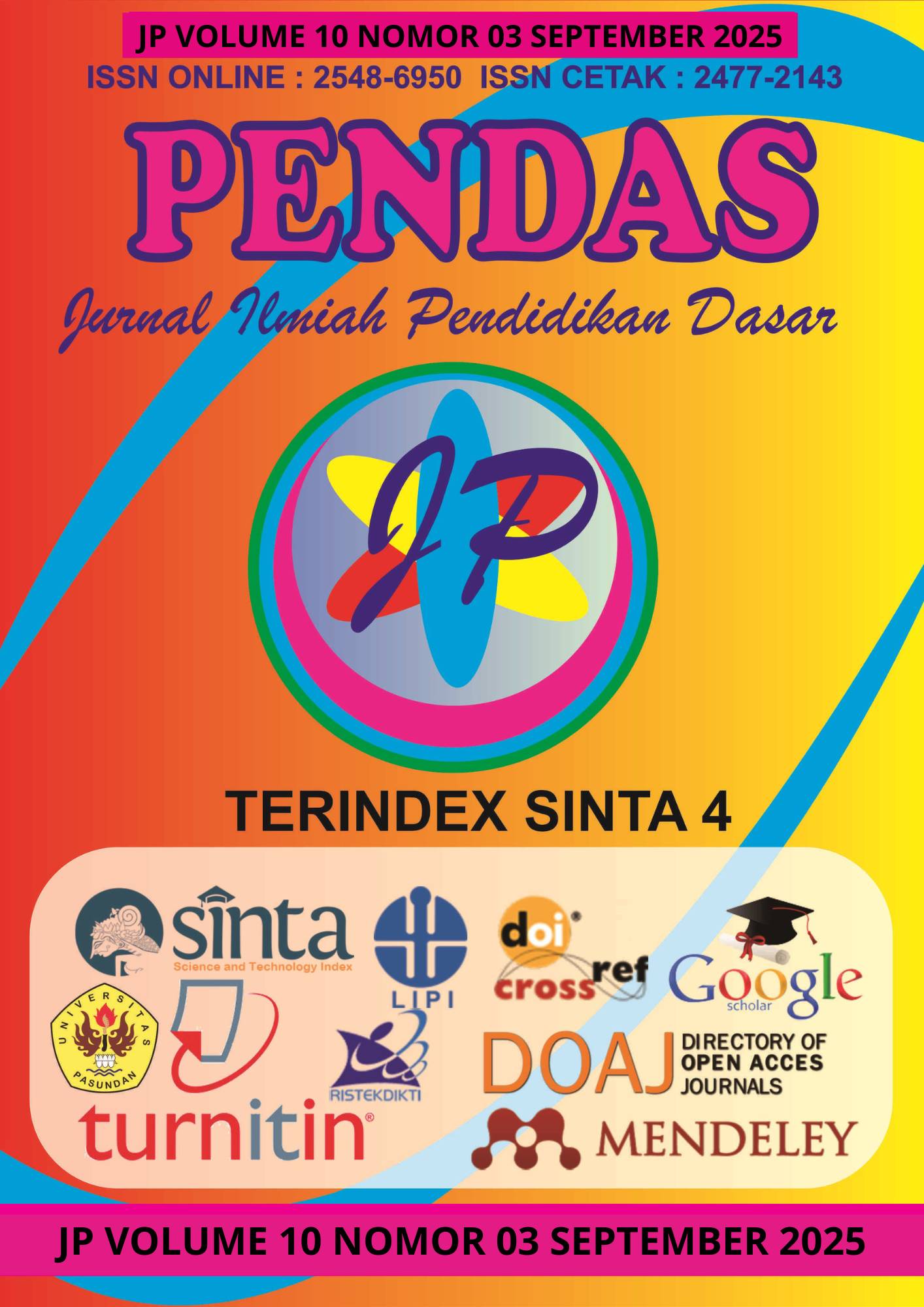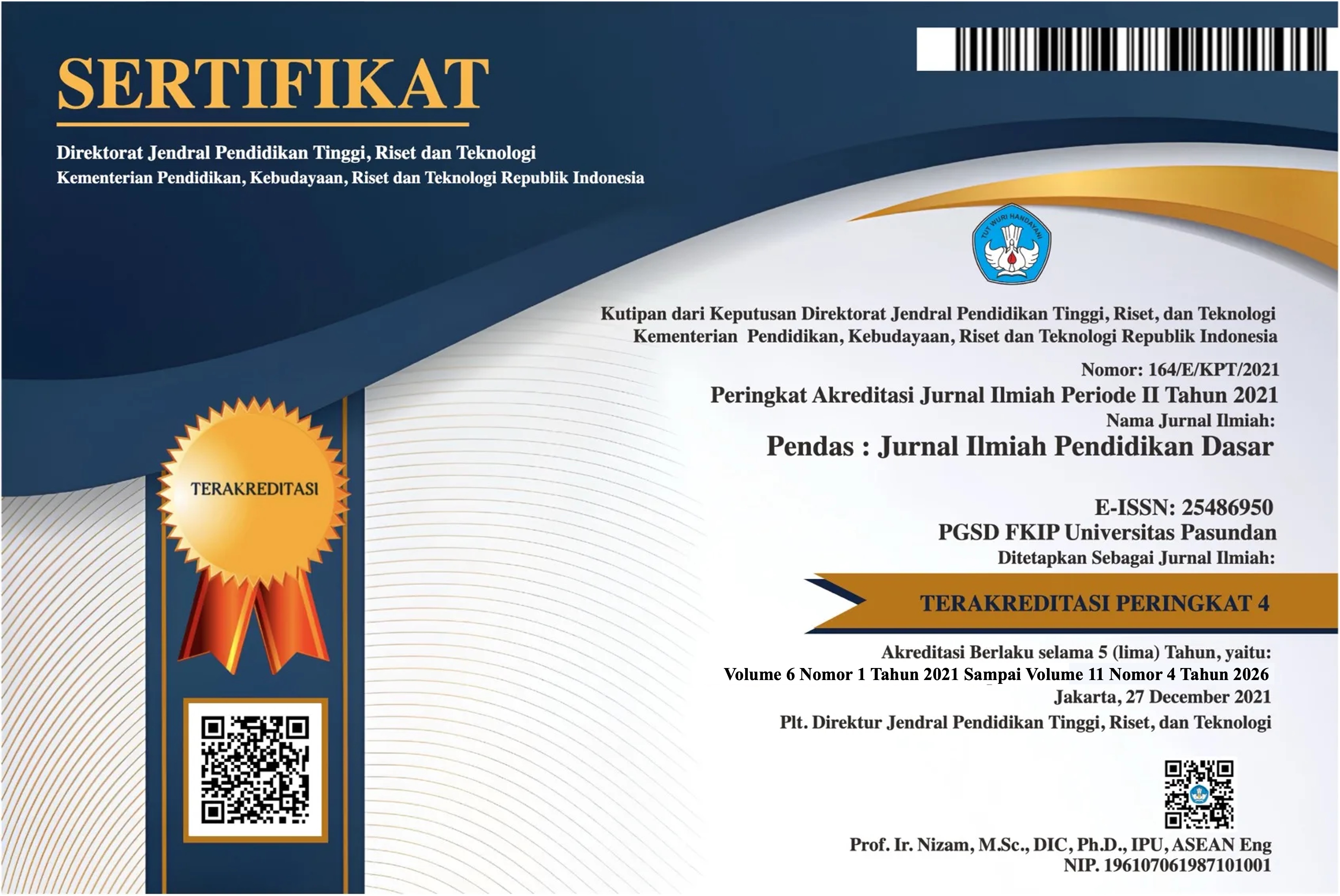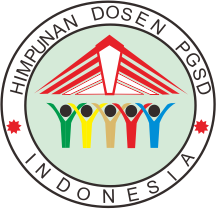PENGARUH TARI MEDLEY NUSANTARA TERHADAP KEMAMPUAN MOTORIK KASAR ANAK USIA 5-6 TAHUN DI TAMAN KANAK-KANAK ISLAM MENTARI BUNDA PADANG
DOI:
https://doi.org/10.23969/jp.v10i03.32200Keywords:
Early Childhood, Gross Motor Skills, Indonesian Medley DanceAbstract
The purpose of this study is to examine how the Nusantara Medley Dance affects the gross motor skills of the five to six-year-old students at Mentari Bunda Islamic Kindergarten in Padang. The gross motor skills of children are still developing. This is evident in morning workouts, where some kids struggle to stay balanced when standing on tiptoe and lifting one leg during warm-up exercises. They also struggle to support their body weight when bending their legs with their arms outstretched, and they have trouble shifting positions when switching to gymnastic moves. Additionally, teachers choose fewer activities to help kids develop their gross motor abilities. This study employs a quasi-experimental research design and a quantitative methodology. All of the students at Mentari Bunda Islamic Kindergarten in Padang made up the study's population. Class B1 served as the experimental class and class B2 as the control class; each class had 15 students. Normality, homogeneity, and hypothesis testing were employed in data analysis procedures. The sig column in Levene's test of variance is 0.939>0.05, according to the hypothesis test table. This figure shows that 0.000 is less than 0.05. If the sig value is less than 0.05, it is in compliance with the measurement criteria of the hypothesis test. Thus, it can be said that Ho is rejected while Ha is accepted. According to the study's findings, children between the ages of five and six benefit from using Indonesian medley dance in terms of their gross motor abilities.
Downloads
References
Alfi, Manzilatur Rohmah. “Peran Kegiatan Tari Untuk Mengembangkan Kemampuan Motorik Kasar Anak Kelompok di TK Muslimat Mazratul Ulum”. Jurnal Universitas Negeri Surabaya. Hlm 50
Anggraini, Denok Dwi.2022. “Perkembangan Fisik Motorik Kasar Anak Usia Dini”. Kediri: Cv Kreator Cerdas Indonesia.
Ayu Fatmawati, Fitri. Perkembangan fisik motorik anak usia dini. (Gresik; Gramedia Communication, 2020), Hal: 2
Hurlock, Elizabeth B. 1998. Perkembangan Anak Jilid 1. Jakarta: Erlangga
Kemendikbud, Permendikbud Republik Indonesia Nomor 146 tahun 2014 Tentang Kurikulum 2013 Pendidikan Anak Usia Dini
Menteri Pendidikan, K. R. (2022). Peraturan Menteri Pendidikan, Kebudayaan, Riset, Dan Teknologi Republik Indonesia Nomor 5 Tahun 2022 Tentang Standar Kompetensi Lulusan pada Anak Usia Dini, Jenjang Pendidikan Dasar, dan Jenjang Pendidikan Menengah. Indonesia.
Rukminingsih, Adnan, G., & Latief, M. A. (2020). Metode Penelitian Pendidikan. Penelitian Kuantitatif, Penelitian Kualitatif, Penelitian Tindakan Kelas. In Journal of Chemical Information and Modeling (Vol. 53, Issue 9).
Santrock. (2007). Perkembangan Anak. Jilid 1 Edisi Ke Sebelas. Jakarta : PT Erlangga
Syafril, S. (2010). Statistika. Padang: Sukabina Press http://repository.unp.ac.id/15552/
Sugiyono, (2018). Metode Penelitian Kuantitatif. Bandung: Alfabeta
Downloads
Published
Issue
Section
License
Copyright (c) 2025 Pendas : Jurnal Ilmiah Pendidikan Dasar

This work is licensed under a Creative Commons Attribution 4.0 International License.



















